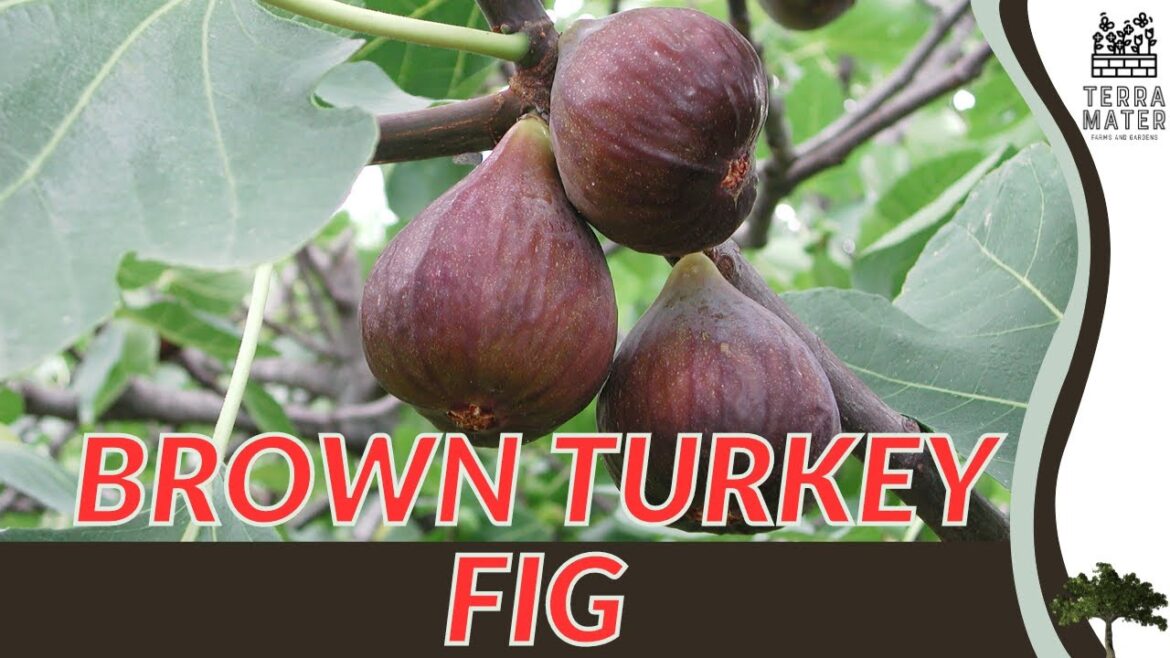#BrownTurkeyFig #Figs #Gardening #FruitGardening #GardenTips
https://www.youtube.com/channel/UCaSjbgrTPkvkzLa0W04RWzg?sub_confirmation=1
Welcome to Terra Mater Gardens!
Discover the delicious and versatile Brown Turkey Fig, a favorite among gardeners for its sweet fruit and easy cultivation. In this informative video, learn about the unique characteristics, growing conditions, and care tips for this productive fig variety. Perfect for gardeners and fruit enthusiasts, this guide provides everything you need to know to grow and enjoy Brown Turkey Figs in your garden. Enhance your gardening skills and knowledge with this quick and insightful guide! (Ficus carica ‘Brown Turkey’)
Here’s a sneak peek at what we’ll cover:
Latin name: Ficus carica ‘Brown Turkey’
Common name: Brown Turkey Fig
Type: Deciduous fruit tree
Sun Exposure: Full sun to partial shade
Days to Germination: Not typically grown from seed; propagated from cuttings or grafts
Seed Depth: Not applicable for this cultivar
Frost tolerant: Moderate frost tolerance; best suited for USDA zones 7-10
Days to Maturity: Typically 1-2 years from a mature cutting or graft
Life Cycle: Perennial
Pollinator Attractant: Not typically grown for attracting pollinators; figs are self-pollinating
Soil Requirements: Well-draining soil; prefers loamy or sandy soil
Watering: Regular watering, especially during dry periods; avoid waterlogging
Mature Size: 10-15 feet (3-4.5 meters) tall and wide
Spacing: Space 15-20 feet (4.5-6 meters) apart to allow for full growth
Bloom Time: Figs do not have noticeable flowers; they produce fruit directly from the stem
Flower Color: Not applicable; figs are known for their fruit rather than flowers
Foliage: Large, lobed green leaves with a rough texture
Flavor: Sweet and rich flavor; figs are edible and often used in culinary dishes
Uses: Edible fruit; used in fresh eating, preserves, baking, and cooking; ornamental value for its large leaves
Special Features: Produces brown to reddish-brown figs with a sweet flavor; attractive large foliage; relatively hardy and adaptable
Hardiness Zones: USDA zones 7-10
Note: Ficus carica ‘Brown Turkey’ is a popular fig cultivar known for its brown to reddish-brown fruit and sweet flavor. It thrives in full sun to partial shade and prefers well-draining soil. This deciduous fruit tree is moderately frost tolerant, making it suitable for USDA zones 7-10. The tree does not have noticeable flowers but produces fruit directly from the stems. The large, lobed green leaves add ornamental value to the garden. Regular watering is important to maintain fruit quality, and proper spacing allows for the tree’s full growth. This fig variety is excellent for fresh eating, preserves, and baking, and is known for its adaptability and relative hardiness.
ABOUT OUR CHANNEL:
Terra Mater Gardens is your ultimate destination for everything related to gardening and farming. Whether you’re an experienced gardener or just starting out, our channel offers a treasure trove of insights, tips, and tricks to help you create the perfect garden or farm. Join us on this captivating journey of discovery!
🌿 Don’t forget to subscribe for more exciting content!
VISIT OUR WEBSITE:
For additional resources, visit our website at https://www.terramatergardens.com.
GET IN TOUCH:
Have questions or suggestions? Feel free to contact us at terramatergardens@gmail.com.
CONNECT WITH US ON SOCIAL MEDIA:
Facebook: https://www.facebook.com/Terramatergardens
Instagram: https://www.instagram.com/terramatergardens_/
Twitter: https://twitter.com/terramaterseeds
TikTok: https://www.tiktok.com/@terramatergardens
Thank you for joining us on this journey of botanical exploration! 🌱


3 Comments
I plant vining Red Ripper Cow Peas underneath my fig trees in Louisiana and train them to stay on the ground. This keeps the big wild bunnies fed and out of my main vegetable garden and provides a harvest of green pods and nutty flavored fresh shelled or dry peas. Cow Pea leaves are edible and very high in protein between 24% & 40% depending on the source or variety including Black Eyed Peas (bush variety). The vines grow back faster than the bunnies can eat them and also provide ground cover and are very heat and drought tolerant. They will literally survive having no water for 2 months during the hottest part of the summer because I`ve tested this by planting them around the edges of the yard.
A Brown Turkey Fig tree cutting rooted indoors in January and planted in Louisiana in early March can grow into a 7 feet tall 10 feet wide bush with fruits in one season if pruned to shape. I like to force my trees to grow long horizontal branches that can be pinned down before very hard freezes and covered with pine straw, leaves and tarps. There`s no excuse for allowing a fig tree (especially a young one) to freeze back to the roots without making any effort to save it.
We also heavily mulch our fig trees beneath the canopy in Louisiana with layers of cardboard, leaves, pine straw, rotting branches, sandy soil and grass clippings. This creates a mound beneath the canopy of rich compost and prevents root knot nematode infestations. I add grass clippings throughout the summer and leaves and straw in the fall.
Very very nice👍👍👍👍👍